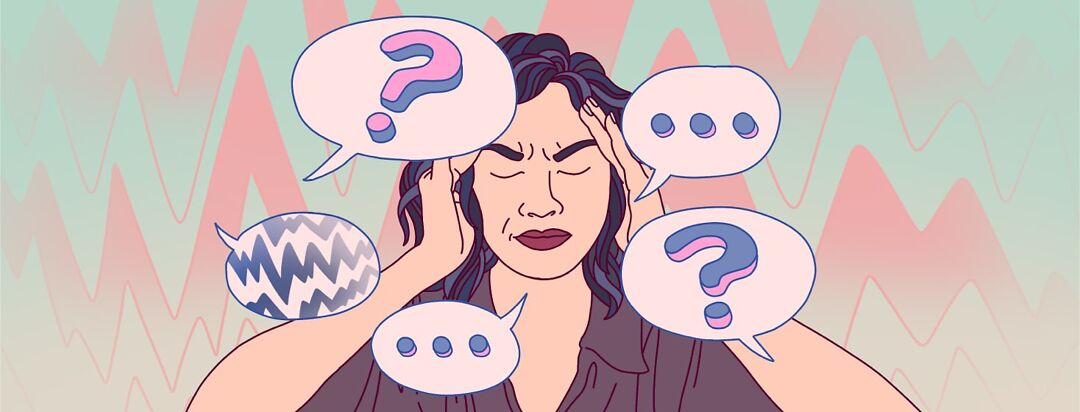The Migraine and Depression Connection: Understanding the Link
Imagine having a headache so bad it feels like thunder rumbling inside your head, making you sensitive to light and sound, and even causing you to feel sick to your stomach. This isn't just a regular headache; it's a migraine. Now, imagine feeling sad, hopeless, and having very little energy for weeks or even months. This is what it can feel like to have depression. You might wonder, "Can these two different health problems be connected?" The answer is yes, and understanding this connection is super important for anyone who experiences either one.
What is a Migraine?
A migraine is more than just a bad headache. It's a type of headache that can cause severe throbbing pain or a pulsing sensation, usually on one side of the head. People with migraines often feel very sensitive to light (photophobia), sound (phonophobia), and even smells. They might also feel nauseous or vomit. Migraines can last for hours or even days and can be so painful that they stop you from doing your normal activities, like going to school or playing with friends 1.
Migraines often have different phases. Some people might notice warning signs a day or two before, like mood changes or stiffness in the neck. Before the headache starts, some might experience an "aura," which can be visual disturbances like flashing lights or zigzag lines. The headache phase is when the pain is most intense. Afterward, people might feel drained or confused for a while 1.
Why Migraines and Depression Often Occur Together
It's common for people who have migraines to also experience depression, and vice versa. This isn't just a coincidence; scientists believe there are real reasons why these two conditions often appear together. Studies have shown that people with migraines are about two to four times more likely to have depression compared to those who don't get migraines 3. Similarly, people with depression are more likely to experience migraines 4.
One reason for this connection might be shared biological pathways in the brain. For example, chemicals in the brain called neurotransmitters, like serotonin, play a role in both mood regulation and pain perception. Imbalances in these chemicals can contribute to both depression and migraines 5. Also, chronic pain from migraines can be a huge stressor, which can naturally lead to feelings of sadness, hopelessness, and isolation, increasing the risk of depression.
Shared Symptoms and Challenges
When someone has both migraines and depression, their symptoms can sometimes overlap or make each other worse. Both conditions can cause:
- Sleep Problems: Trouble falling asleep, staying asleep, or sleeping too much6.
- Fatigue: Feeling constantly tired and lacking energy6.
- Difficulty Concentrating: Struggling to focus on tasks or remember things6.
- Irritability: Feeling easily annoyed or frustrated6.
Living with chronic migraines can be very challenging. The unpredictability of attacks can make it hard to plan activities, go to school, or maintain social connections. This constant disruption and pain can contribute to feelings of sadness and isolation, making depression even harder to manage. Similarly, depression can make it harder to cope with migraine pain, creating a cycle where each condition fuels the other 7.
Treatment Approaches for Both Conditions
Because migraines and depression are so closely linked, doctors often recommend treatment plans that address both conditions at the same time. This is called a "holistic" approach, meaning it looks at the whole person and all their symptoms. Here are some common treatment options:
Medications
- Antidepressants: Some medications used to treat depression, particularly certain types of antidepressants, can also help prevent migraines8.
- Migraine-Specific Medications: Other medications are designed specifically to stop a migraine once it starts or to prevent migraines from happening in the first place1.
Therapy
- Cognitive Behavioral Therapy (CBT): This type of talk therapy helps people identify and change negative thinking patterns and behaviors. CBT can be very effective for both depression and managing chronic pain like migraines9.
- Biofeedback: This technique teaches people how to control certain body functions, like heart rate or muscle tension, which can help reduce stress and prevent migraines1.
Lifestyle Changes
Making healthy choices in daily life can also make a big difference for both conditions:
- Regular Exercise: Physical activity can improve mood and reduce stress, which helps with both depression and migraine frequency10.
- Healthy Diet: Eating balanced meals and avoiding trigger foods for migraines can be helpful1.
- Stress Management: Techniques like mindfulness, meditation, or deep breathing can reduce stress levels10.
- Consistent Sleep Schedule: Going to bed and waking up at the same time each day helps regulate the body's natural rhythms1.
Understanding the link
Migraines and depression are not just two separate problems, but often linked through shared biological pathways and the challenges of living with chronic pain and mood changes. If you or someone you know is experiencing migraines and also feeling persistently sad or hopeless, it's crucial to talk to a doctor or a trusted loved one. Remember, you don't have to suffer alone, and there are many effective ways to manage both migraines and depression.
